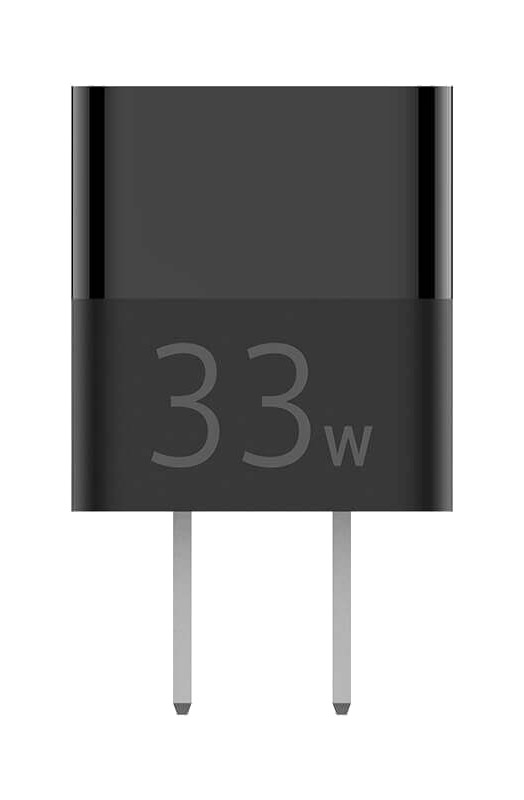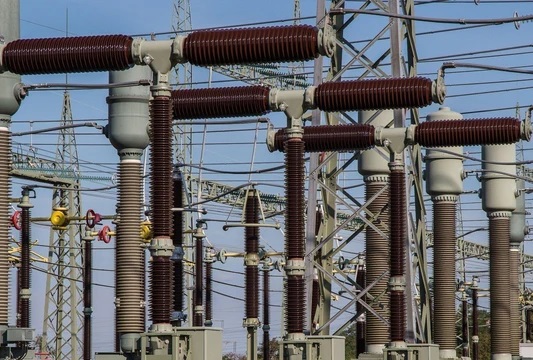In recent years, concerns about the environment and issues surrounding the supply and geopolitics of fossil fuels have led to increased pressure to reduce our reliance on them globally. As a result, many countries are attempting to decrease their consumption of fossil fuels, and one significant trend in the transportation industry is the switch to all-electric vehicles.
This has resulted in a significant increase in the popularity of electric vehicles (EVs) over the past decade. In 2012, only 120,000 EVs were sold worldwide, but by 2021, that number was being surpassed every week. While this increase in electric mobility is already helping to replace nearly 2 million barrels of oil per day, it also significantly increases the demand for electricity.
At the same time, generating enough electricity in a sustainable manner is a challenge. The environmental impact of electric vehicles is largely determined by their production and the generation of the electricity used to power them. Therefore, there is an urgent need to increase renewable energy output, and solar power is one of the most popular residential sources of renewable energy. In this article, we will discuss the basics of solar energy and explore the use of portable solar panels for charging EVs.
Solar Energy Fundamentals
When contemplating solar energy, most individuals often associate it with solar panels installed on rooftops. However, from a scientific perspective, this is not the definition of "solar energy." In simple terms, solar energy refers to the energy that originates from the sun, a portion of which reaches Earth. Utilizing a process called photovoltaics, this energy can be transformed into electricity.
A solar panel, also known as a photovoltaic (PV) panel, is made up of numerous solar cells, each composed of a semiconductor (typically silicon). This semiconductor absorbs solar energy and converts it into electricity by generating a current or electron movement. This electricity can be routed back into the electrical system or used to power a structure.
In the context of residential energy production, "solar power" refers specifically to the photovoltaic process.
Charging Electric Vehicles Using Portable Solar Panels
Charging an electric vehicle with a portable solar panel can be a simple process, but it is dependent on several factors, including the size of the solar system, the time of day during which you charge your EV, and the climate and weather conditions. To use solar power exclusively to charge your EV, you will require a larger system that is capable of meeting your requirements.
The ease of charging an EV with a portable solar panel is determined by various factors, such as the charger speed, which can range between 2 kW and 22 kW, the size of the portable solar panel system, the battery level of the EV, the frequency and distance of your drives, among others.
Benefits of Charging Electric Vehicles Using Portable Solar Panels
Environmental Benefits
Charging electric vehicles with solar panels is beneficial to the environment since EVs are much better for the planet than gasoline or diesel vehicles. However, the benefits of EVs are reduced if they are charged using electricity generated from fossil fuels. Charging your EV with solar panels allows you to take full advantage of the environmental benefits of driving an electric vehicle.
Low Maintenance
Once set up, your portable solar panel system will provide electricity for many years without requiring significant maintenance. Portable solar panels do not have moving parts, which means you do not have to worry about repairs, maintenance, or replacements.
Cost-Effective
Charging your electric vehicle with solar panels is significantly less expensive than using the grid. Producing electricity using a portable solar panel is much cheaper than purchasing electricity from the grid. Over time, this can result in significant cost savings in charging your electric vehicle.
Energy Bill Savings
Home solar photovoltaic systems can help reduce energy expenses. Charging your electric vehicle with a portable solar panel can lower your energy costs, and if you generate more electricity than you use, you can sell the excess back to the grid, resulting in overall energy bill savings.
Types of EV Chargers
There are four main categories of EV chargers:
Plug-in Portable Socket Chargers
The majority of EVs come with a level 1 charger, which is a simple and portable charging solution that works with any standard 10A wall outlet. Depending on the size of the battery and its initial charge level, it can take anywhere from 24 to 36 hours to fully charge an electric vehicle using these chargers.
Most 10A chargers have a maximum power of 2.2 kilowatts, but they usually only utilize 1.7 to 2.0 kilowatts, which can add 10 to 14 kilometers per hour to a vehicle's range. While a dedicated 15A outlet is typically needed for most households, more efficient 15A plug-in options are also available.
Single-Phase EV Chargers
Level 2 single-phase EV chargers are available in various designs and installation options, such as post- or wall-mounted. Most are rated at 32 Amps, equivalent to 7.4kW, and can provide a car with a range of 40-50km/h at full charge.
Since most people travel less than 50 kilometers per day, a full charge should take no more than two hours each day. With a standard single-phase 7kW charger, it will take approximately 8-10 hours to fully recharge an average electric vehicle.
Three-Phase EV Chargers
Three-phase EV home chargers have a similar appearance to single-phase wall-mounted chargers and are also rated at 32 Amps. However, due to their three supply phases, they can provide three times the power of their single-phase counterparts, which is approximately 22kW.
At the fastest charging rate, a three-phase EV charger can provide an electric vehicle with a range of 110 to 155 kilometers per hour. As a result, an average EV can be fully charged in less than three hours using a three-phase EV charger.
Combined EV Charger and Solar Inverter
A new technological advancement is a solar inverter that can directly charge electric vehicles through a portable solar panel system. The integration of a solar inverter with an EV charger is an innovative solution that eliminates the need for a dedicated electric vehicle charger, as well as any necessary wiring and electrical changes. However, the inverter must be positioned close to the EV, which could be a disadvantage. This option may be appealing to those who prefer smart home controls and solar energy systems.
Do I Require a Smart EV Charging Station for Solar-Powered EV Charging?
If you are contemplating utilizing your solar panels to charge your electric vehicle (EV), it is important to note that the process is more complex than simply connecting an EV charger to a portable solar panel system.
Photovoltaic panels produce intermittent and highly variable power, which cannot be safely transmitted to an EV battery or the electrical grid. Therefore, an inverter must be included in any solar panel installation to convert the electricity for use in your home electricity network and for charging your EV or powering other appliances.
While a smart EV charging station is not necessary for solar-powered EV charging, it can significantly enhance the efficiency and convenience of utilizing solar energy. For instance, if you have both solar panels and a smart charging station, you can schedule your EV's charging during peak solar power hours. When combined with an Energy Management System (EMS), the charging station can forecast optimal charging times, ensuring that the electricity produced is utilized sustainably and saving you money in the long run.
Enhancing Efficiency of Electric Vehicle (EV) Charging
The efficiency of charging an average EV using a residential EV charger is subject to various factors, including the charging rate, ambient temperature, battery temperature, charging cable length, and the performance of the vehicle's power conversion system (alternating current (AC) to direct current (DC) converter). Temperature plays a pivotal role in determining the efficacy of the charger due to several reasons. In extremely hot weather conditions, the car's battery cooling system may need to operate while charging.
In a similar vein, if the temperature is too low, the battery heating system must be functioning while the car is charging. In addition, higher temperatures generally result in greater electrical resistance, causing the EV charger's efficiency to decline.
The following are some other factors that may influence the efficiency of EV charging:
Cable Losses in EV Charging
When an electric current flows through a cable, there is a certain level of resistance that causes voltage losses. The amount of voltage loss is dependent on factors such as the charging current, cable length, and diameter. Power is the product of current and voltage; hence, if the cable's temperature increases, its resistance to the flow of electricity decreases, resulting in lower power output. Longer cables tend to result in more power loss. Additionally, exposing the charging cable and extension leads to direct sunlight may increase losses (especially on concrete surfaces).
To mitigate these losses, it is recommended to use a shorter extension lead or cable. Alternatively, upgrading to a larger (not longer) cable can also be helpful. For 10A extension leads, commonly used copper core sizes are 1.0mm2 and 1.5mm2, whereas for 15A leads, a larger 2.0mm2 is used. If a very lengthy extension cord is required, a 15-ampere-per-second (Amp) cable and outlet can help maximize charging efficiency.
Optimizing Charging Rates for Electric Vehicles
Similar to other power-converting equipment, chargers or inverters perform best when operating near their rated power output. An EV's on-board charger is responsible for converting alternating current (AC) from the power grid into high-voltage direct current (DC) before charging the battery. This process involves converting electricity using transistors and supplying energy to auxiliary controls such as temperature management and cell balancing.
If the charger's capacity is 7 kW, but only 2 kW is being utilized during charging, losses will be higher. To achieve maximum efficiency, it is advisable to charge the EV at around 50% of the rated charge or higher. This ensures that the charger operates at or near its rated power output, resulting in optimal charging efficiency.
Enhancing the Benefits of Electric Vehicles with Portable Solar Panels
Driving an electric vehicle (EV) offers numerous advantages, including lower running costs, environmental-friendliness, and zero fuel expenses. These benefits can be amplified by using portable solar panels to charge the EV.
If you are interested in purchasing a portable solar panel system for your EV, we offer a wide range of options to choose from. Our selection includes various types of portable solar panels, generators, and solar kits, which can be tailored to your EV model, charger, capacity, location, and budget.










































